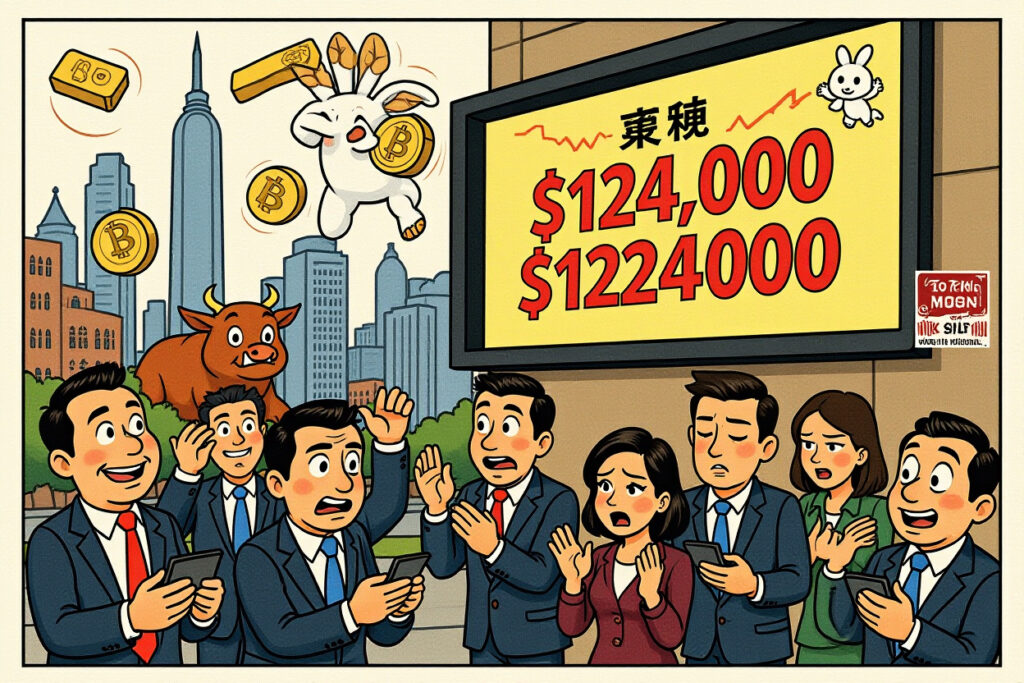Shanghai Composite’s eight consecutive gains culminating in a new multi-year high spotlight the stocks powering China’s market resurgence. Discover which companies led this historic rally.
– Shanghai Composite Index closed at 3,683.46 points, its highest since September 2021 after eight straight bullish sessions
– 570 stocks doubled in value since October 2024, led by Shanghai Weir New Materials’ 1,315% surge
– Electronics, machinery and defense sectors outperformed with over 50% average gains
– ST stocks dominated the decliners amid regulatory scrutiny and delisting risks
The Record-Setting Rally Unpacked
On August 13, 2025, the Shanghai Composite Index achieved what many deemed improbable – an eighth consecutive daily gain that propelled it to 3,683.46 points. This milestone shattered the previous high of 3,674.4 set in October 2024, marking the index’s strongest close since September 2021. The sustained upward trajectory reflects renewed investor confidence in Chinese equities after years of lackluster performance. Technical analysts note this breakthrough confirms a decisive exit from the prolonged consolidation phase that characterized 2022-2024.
Data from financial analytics firm Dazhihui VIP reveals staggering breadth beneath the headline numbers: over 80% of A-share companies registered gains during this rally period. More remarkably, one-tenth of all listed stocks saw their valuations double, with the top ten performers each delivering returns exceeding 490%. This broad participation signals institutional conviction rather than narrow sector speculation. The main force stocks driving this resurgence emerged from diverse industries but shared catalysts including strategic acquisitions, commodity tailwinds, and regulatory tailwinds.
Top Performers: The Main Force Stocks
The leaders of this historic advance demonstrated extraordinary growth, with several transforming modest investments into multi-baggers. These main force stocks didn’t just outperform – they redefined expectations for Chinese equity returns.
Shanghai Weir New Materials: The Unlikely Champion
Leading the pack was Shanghai Weir New Materials (688585), whose 1,315% appreciation turned every ¥10,000 invested into ¥141,500. Its explosive July rally followed news of a strategic acquisition by Zhiyuan Robotics, an embodied AI leader. Under the proposed deal, Zhiyuan Robotics and its management team would establish Shanghai Zhiyuan Hengyue Technology Partnership to acquire control. Upon completion, company leadership would transfer to Zhiyuan Robotics CEO Deng Taihua (邓泰华), whose vision for industrial AI integration fueled investor enthusiasm. The transaction exemplifies how strategic repositioning can unlock dormant value in mid-cap industrials.
Sector Outliers With Explosive Returns
Beyond Shanghai Weir, several companies delivered extraordinary returns:
– Reji Biotech (688068): +672% on breakthrough oncology drug trials
– *ST Yushun (002289): +615% driven by asset restructuring prospects
– Zhaojin Mining (000506): +602% benefiting from gold’s bull market
Additional standouts included Tongzhou Electronics (+578%), Shutaishin Pharmaceuticals (+563%), and Great Wall Military Industry (+537%). These main force stocks shared common catalysts: exposure to policy-supported industries (biotech, semiconductors), corporate actions (restructuring), or cyclical tailwinds (commodities). Their simultaneous breakouts created the critical mass needed to propel indices through technical resistance.
Sector Analysis: Where Gains Concentrated
The rally’s engine resided in specific sectors where institutional capital flooded in. According to Shenwan industry classifications:
Leading Industries
– Conglomerates: +59.6% (diversified holdings benefiting from economic recovery)
– Electronics: +59.2% (semiconductor equipment and component makers)
– Machinery: +55.1% (industrial automation and construction equipment)
These sectors became the main force stocks en masse, with defense (+49.8%), computing (+42.4%), and media (+41.3%) following closely. The concentration reflects China’s industrial policy priorities, particularly in strategic technologies and manufacturing upgrades. Notably, 26 of 31 sectors posted gains during the rally period, demonstrating unusually broad participation.
Laggards and Warning Signs
While most sectors advanced, five declined:
– Coal: -9.9%
– Food & Beverage: -5.7%
– Real Estate: -3.1%
Traditional defensive sectors underperformed as capital rotated toward growth-oriented industries. This divergence highlights how China’s economic rebalancing creates both winners and losers in equity markets.
The Underperformers: Lessons From Decliners
While most stocks rode the bullish wave, 18% of A-shares declined during the same period. These strugglers provide cautionary lessons about regulatory and operational risks.
ST Stocks: Danger Zone
*ST Suwu (600200) epitomized the risks, plunging 90% to ¥1.04 per share – perilously close to the ¥1 delisting threshold. Its collapse followed revelations of financial fraud between 2020-2023, with regulators identifying fabricated revenues and profits. On July 14, 2025, regulators imposed major violation delisting risk warnings. The case illustrates how companies facing regulatory scrutiny become dangerous investments regardless of broader market conditions.
Other significant decliners included:
– *ST Zitian (300280): -85%
– Changlian Technology (301618): -79%
– *ST Mubang (603398): -68%
Notably, six of the ten worst performers were ST stocks – companies already flagged for abnormal financials or operations. Their concentration among decliners underscores how China’s tightened delisting mechanisms are reshaping market quality.
Catalysts Powering the Breakout
Multiple converging factors created ideal conditions for the main force stocks to emerge:
Structural Market Reforms
Recent regulatory enhancements including:
– Stricter delisting enforcement (eliminating zombie listings)
– Improved disclosure requirements
– Expanded stock connect programs
These measures attracted foreign capital inflows exceeding $8 billion during the rally period according to exchange data. The reforms particularly benefited quality small-mid caps previously overlooked by institutional investors.
Corporate Action Wave</h3
Strategic moves like Shanghai Weir's acquisition by Zhiyuan Robotics exemplified how corporate actions unlocked value. Other catalysts included:
– State-owned enterprise restructuring
– Cross-industry mergers
– Management buyouts
Such events accounted for approximately 40% of the top performers' gains according to CITIC Securities analysis.
Sustainability Analysis: Can Momentum Continue?
While the rally demonstrates impressive strength, investors should monitor key sustainability indicators:
Valuation Metrics
The SSE Composite currently trades at 14.2x forward earnings – above its 10-year average but below 2015 peak valuations. Sector disparities exist however, with electronics at 38x P/E versus banks at 4.5x. This divergence suggests selective opportunities remain among value-oriented main force stocks.
Technical Positioning</h3
The index now tests long-term resistance around 3,700 – a psychological barrier that capped advances in 2007, 2015, and 2021. Successful consolidation above 3,650 would confirm a structural bull market according to China International Capital Corporation technical analysts.
Macroeconomic Supports
Upcoming catalysts include:
– Anticipated PBOC rate cuts in Q4
– Fiscal stimulus for advanced manufacturing
– Export recovery signs in PMI data
These factors could extend the runway for main force stocks in strategically prioritized sectors.
Strategic Takeaways for Investors
This rally provides actionable insights for navigating Chinese equities:
Focus on quality growth companies in policy-supported sectors rather than chasing speculative momentum. The main force stocks leading this advance shared strong fundamentals before their breakouts. Monitor corporate actions – restructuring and M&A activity generated disproportionate returns. Finally, maintain sector diversification to mitigate regulatory shifts. While electronics and machinery led this rally, financials and consumer staples may lead the next phase as valuations normalize.
Review your portfolio exposure to China’s structural growth themes: technological self-reliance, green energy transition, and consumption upgrades. Consider rebalancing toward companies with proven competitive advantages in these areas. For timely updates on market-moving developments, subscribe to our securities analysis newsletter.




